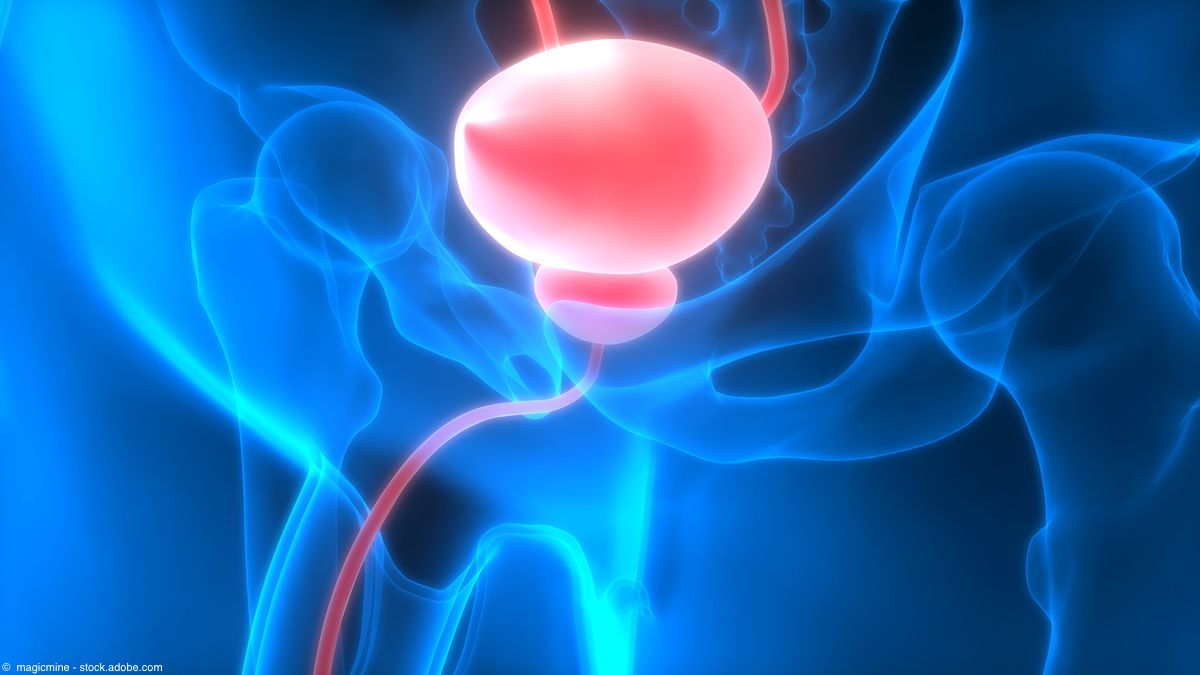News
Article
Long-term data highlight efficacy of adjuvant chemotherapy in UTUC
Author(s):
Adjuvant chemotherapy after nephroureterectomy continued to show an efficacy benefit versus surveillance in patients with upper tract urothelial cancer, according to long-term follow-up data from the phase 3 randomized POUT trial.
Adjuvant chemotherapy after nephroureterectomy continued to show an efficacy benefit versus surveillance in patients with upper tract urothelial cancer (UTUC), according to long-term follow-up data from the phase 3 randomized POUT trial.1
“In summary, updated outcomes from the POUT trial add further support to the value of adjuvant systemic gemcitabine/platinum combination chemotherapy after nephroureterectomy for UTUC,” the authors concluded.

At a median follow-up of 65 months, the 5-year disease-free survival (DFS) rates were 62% with adjuvant chemotherapy versus 45% with surveillance (univariable HR, 0.55; 95% CI, 0.38 -0.80; P = .001). These results sustained the DFS benefit reported in the study’s primary analysis.
Overall survival (OS) data showed a 5-year OS rate of 66% with adjuvant chemotherapy versus 57% with surveillance (HR, 0.68; 95% CI, 0.46-1.00; P = .049). The DFS and OS benefits were observed across the study population, regardless of chemotherapy type and disease stage.
“Primary results from POUT have already changed practice on the basis of the DFS benefit. The validity of changing practice on the basis of DFS alone has been reaffirmed by recent regulatory approvals for adjuvant nivolumab in invasive urothelial cancer, including UTUC,” the study authors wrote. “Since POUT was stopped early on the basis of superior DFS with chemotherapy, power for OS analysis was reduced. Nevertheless, a statistically significant OS advantage was seen in univariable analysis…and, although nonsignificant, multivariable modeling showed a consistent positive trend.”
Overall, the open-label phase 3 POUT trial (NCT01993979) included 261 patients with muscle-invasive or lymph node–positive, nonmetastatic UTUC. Patient and tumor characteristics were well balanced between the study arms. The median age across all 260 patients was 68 years (range, 36-88) and 67.7% of patients were male. Nearly all patients (n = 241) were British. Nine percent of patients had nodal involvement and 11.9% of patients had positive microscopic surgical margins. Tumor stages were T2 (28.5%), T3 (65.8%), and T4 (5.8%). Primary tumor locations were ureter (n = 89), renal pelvis (n = 92), both (n = 78), unknown (n = 1). The number of lesions was 1 (n = 221), more than 1 (n = 31) and unknown (n = 8).
After radical nephroureterectomy, patients were randomized to platinum-based chemotherapy (n = 132) or surveillance (n = 129). Adjuvant chemotherapy consisted of four 21-day cycles of gemcitabine (1000 mg/m2 once daily on days 1 and 8) plus cisplatin (70 mg/m2) or, in patients with a glomerular filtration rate of 30 to 49 mL/min, carboplatin (AUC 4.5 or 5). Both chemotherapies were administered once on day 1.
The primary outcome measure of the study was DFS. Secondary outcome measures included OS, metastasis-free survival, incidence of secondary bladder tumors, safety, and quality of life.
There were no new safety signals reported compared with the primary analysis. The researchers also observed no clinical difference in quality of life between the 2 study arms.
“In summary, updated outcomes from the POUT trial add further support to the value of adjuvant systemic gemcitabine/platinum combination chemotherapy after nephroureterectomy for UTUC,” the authors concluded.
Reference
1. Birtle AJ, Jones R, Chester J, et al. Improved Disease-Free Survival With Adjuvant Chemotherapy After Nephroureterectomy for Upper Tract Urothelial Cancer: Final Results of the POUT Trial [Feb 13, 2024]. J Clin Oncol. doi: 10.1200/JCO.23.01659
Newsletter
Stay current with the latest urology news and practice-changing insights — sign up now for the essential updates every urologist needs.













